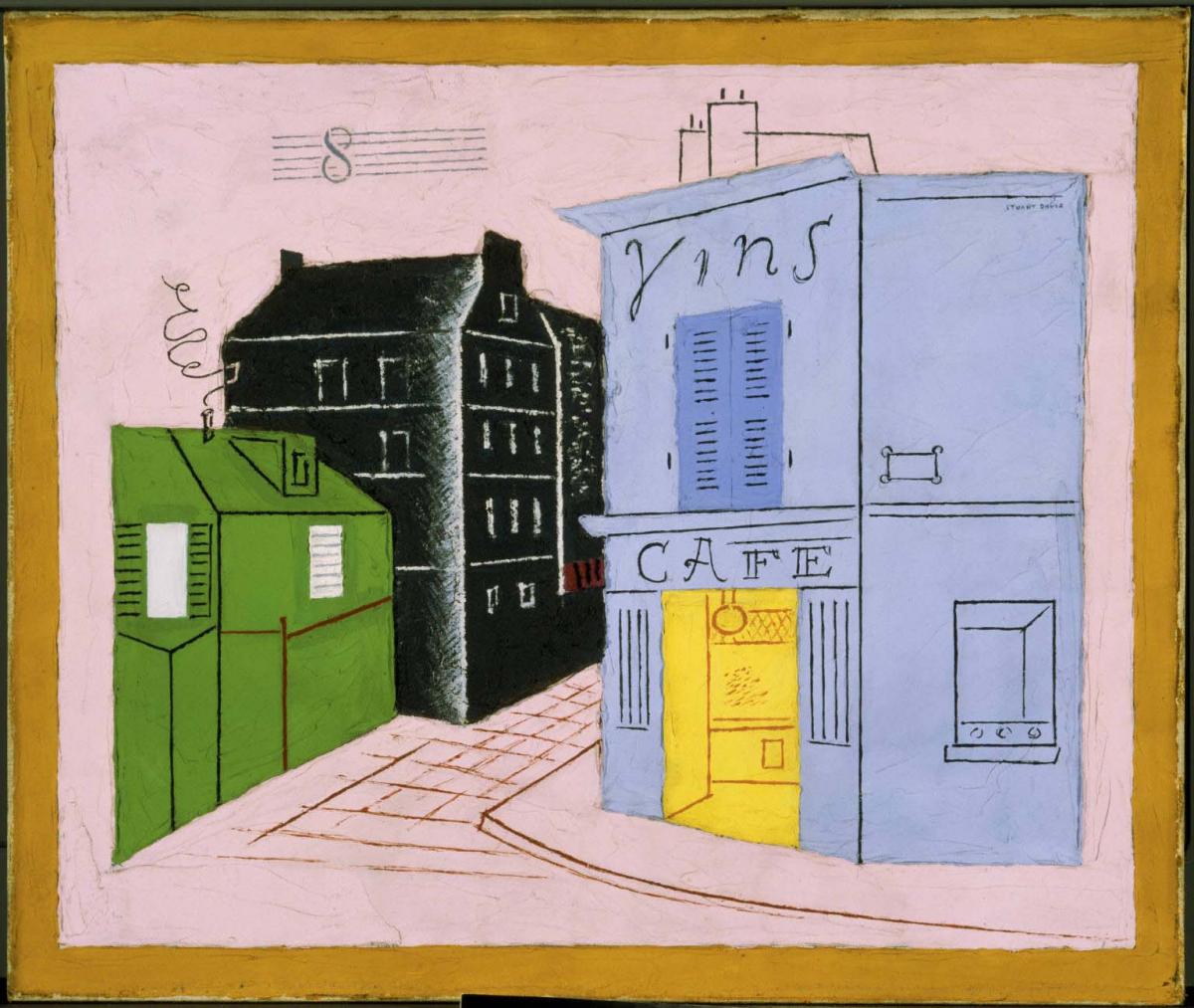Blue Café
Stuart Davis ( 1928 )

During his year in Paris (1928–1929), Davis executed several works depicting streets and buildings. These works became Duncan Phillips’s favorite creations by the artist. Not only did they revive Phillips’s pleasant memories of his own trips to Paris, they also struck him as lively, provocative improvisations of “linear perspectives and color schemes … [which] reveal a kinship to the … virtuoso Picasso.” He considered them lighthearted and straightforward as well as sophisticated, and believed that they suggested the influence of European modernists like Rousseau, Matisse, de Chirico, and Braque.
Both Blue Café and a related painting in The Phillips Collection, Corner Café, are flattened in a manner reminiscent of the cubists, rendered with the simplicity and pure color of Rousseau and Matisse, and imbued with an isolated atmosphere that recalls de Chirico’s empty, dream-like cityscapes. Davis imposed flat, abstract planes of brilliant color and texture on realistic representations of the city’s streets and buildings, evoking the nature of the brightly painted stucco walls of Paris.
In Blue Café, Davis painted a frame around the image and suspended the forms against a background of solid pink, emphasizing the two-dimensional picture plane. The space of the composition is compressed within the painted frame and the buildings reduced to simple geometric blocks. He transformed the curls of smoke rising from the chimney into taut squiggles. In the sky a schematic musical staff, on which is placed a figure—either the number 8 or a bass clef—hovers in the upper part of the composition. It suggests sound, perhaps that of a Parisian street or café music, which Davis greatly enjoyed during his residence in the French capital. Hovering in the sky, the motif emphasizes the flat surface of the canvas as if to counteract the curve of street, which implies spatial depth. In contrast to the cool objectivity of the Egg Beater series of the previous two years, the Paris works retain the identity and buoyant atmosphere of their subject, revealing Davis’s love for that city.